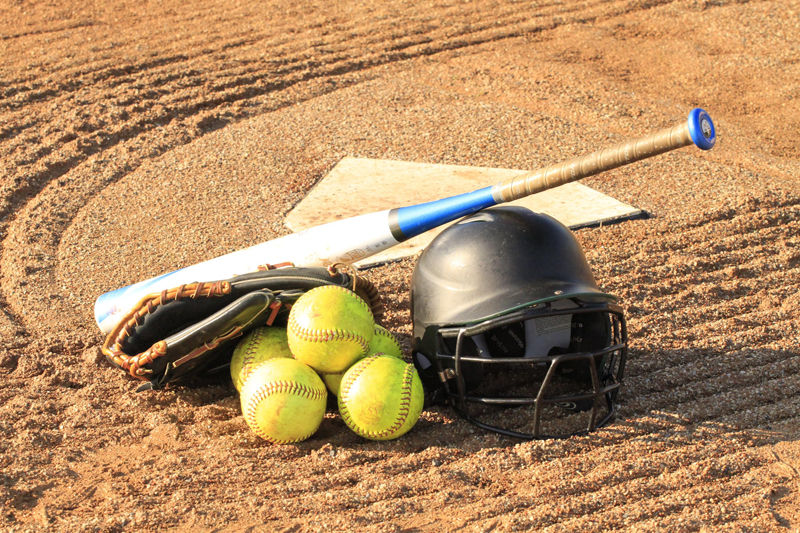Pitching to Contact in Softball - Advantages

To review, our working definition of the PtC approach is
1) Throw strikes early in the count
2) Walks are verboten!
3) Don’t waste pitches when ahead in the count – go after the batter
4) Attack a batter’s weaknesses
5) Trust the defense behind you to make plays
There are a few baseball-centric reasons that some Major League teams seem to be adopting the PtC approach. First and foremost, the dominant strikeout pitchers tend to be the most costly, and some teams see PtC pitchers as a less expensive alternative. While at first glance this rationale does not seem to apply to Softball, it in fact does. The Softball currency is not lucrative contracts as with Major League pitchers, but in college scholarships and the choice of premium travel teams. In both sports, dominant strikeout pitchers can basically name their price, with the Softball pitcher being able to choose the best Softball programs and/or best free education. Softball teams outside the elite inner circle at any level tend have to settle for good, but not great, pitching.
Another advantage espoused by PtC adherents is that Major League PtC pitchers can pitch deeper in the game compared to strikeout pitchers because each at bat takes less pitches to resolve, resulting in lower pitch counts per inning. Pitching deeper into the game can mean foregoing middle relief pitchers and instead skipping straight to strong end-of-game relief specialists and therefore increase the chance of a win. Interestingly, it appears that PtC does not increase pitching efficiency, or at least there isn’t a big enough difference between PtC and strikeout pitchers’ pitch count to matter (for a pretty convincing statistical argument on why not, I refer you to this Hardball Times article: The Kazmir Conundrum, by David Gassko). In fact, it seems that on average a strikeout pitcher pitches more pitches per batter but that they will also face less batters per inning (see this page under “Pitching Styles”: Which pitches longer?). As far as batters faced, baseball PtC and strikeout pitchers perform about the same according to Gassko’s article.
One other comment on pitch counts. Major League baseball (and indeed, all the way down to the youngest levels of baseball) tracks pitch counts closely, as throwing overhand is very hard on the shoulder. Pitching underhand, in contrast, is much easier on the shoulder and Softball pitchers can easily pitch complete games on back-to-back days with little trouble. In fact, I saw a 9 year-old pitcher pitch four games on a Saturday, resulting over 400 pitches, and it wasn’t her arm that gave out (well, her whole body was sore at the end of the day) but her fingers as she developed blisters from pitching so much. Pitch counts are definitely more of a concern for a baseball pitcher than for a Softball pitcher.
We will dive a little deeper into the stats to see if a PtC approach works well for Softball later, but to conclude this section, there are three reasons why some Major League teams adopt PtC.
a) Strikeout pitchers tend to be more expensive than other pitchers,
b) PtC may allow starting pitchers to pitch deeper into the game which would mean that the stronger part of the bullpen is reached easier, and
c) Overhand throwing produces a lot of wear and tear on the shoulder, and so if PtC reduces pitch counts, or allows a pitcher pitch less pitches per inning, then PtC could prevent injuries in the long run.
In retrospect, it appears that a) and c) are legitimate advantages, and b) is less so.
In our next article, we’ll take a harder look at PtC with respect to pitch counts for both baseball and Softball to get a more definitive feel for its effectiveness.
BellaOnline Softball Subject List: Coach´s Box, Health & Medical, History of Softball, International Softball, Organizations, Parents , Professional Softball, Reviews, Rules & Regulations, Scorekeeping, Stats & Analysis, Travel Ball |
This site needs an editor - click to learn more!
You Should Also Read:
Pitching to Contact -- Stats & Analysis subtopic
Pitching to Contact in Softball - Intro
Pitching to Contact in Softball - Analysis
Related Articles
Editor's Picks Articles
Top Ten Articles
Previous Features
Site Map
Content copyright © 2023 by Don McKay. All rights reserved.
This content was written by Don McKay. If you wish to use this content in any manner, you need written permission. Contact
BellaOnline Administration
for details.


